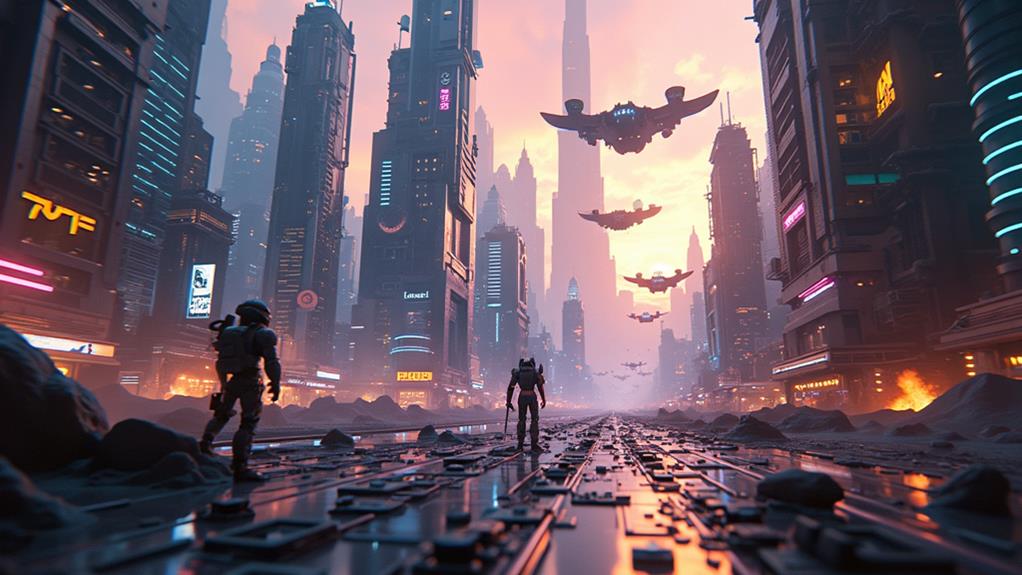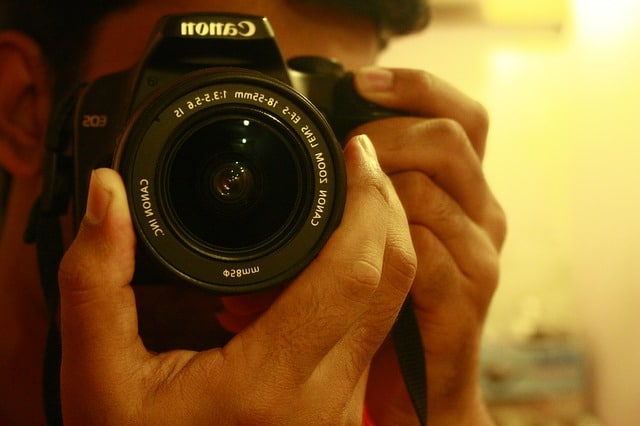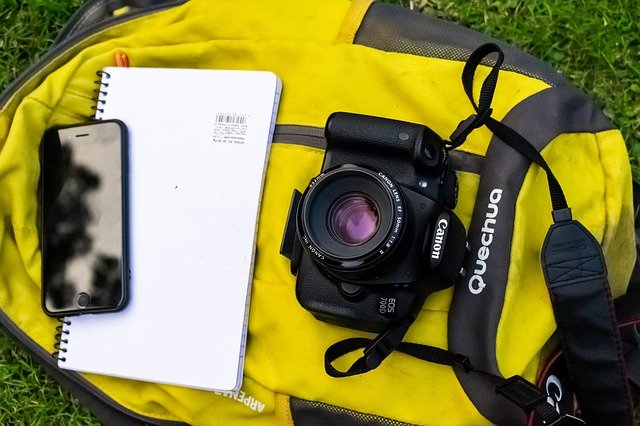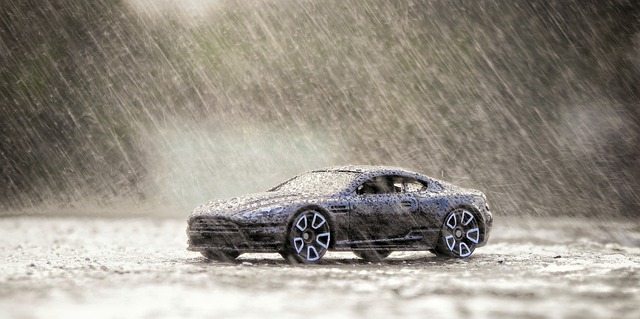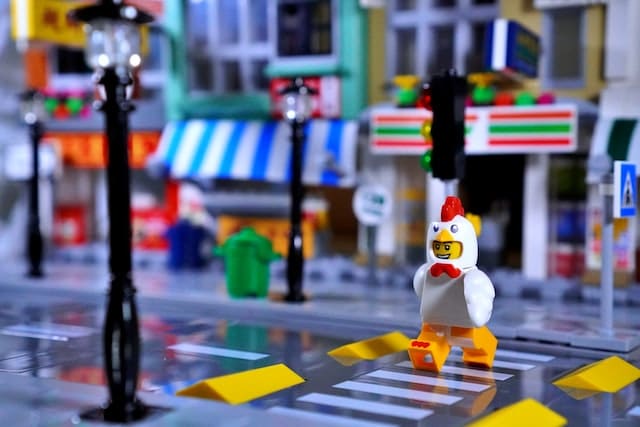When creating epic sci-fi dioramas for toy photography, you've got to think beyond just placing figures in a scene. Start by nailing down the right scale to verify everything looks cohesive. Then, plunge into crafting realistic terrain, where every rock, crevice, and structure tells a story. Props need to be thoughtfully selected to enhance the theme and maintain scale integrity. But what truly sets your scene apart is the lighting—it's all about creating the right atmosphere. So, how do you balance all these elements seamlessly to make your diorama truly epic?
Key Takeaways
- Consistent Scale: Ensure all elements are in the same scale to maintain realism and viewer immersion.
- Detailed Terrain: Use authentic materials and intricate detailing for natural elements like rocks and vegetation.
- Dynamic Lighting: Experiment with various light sources and angles to create atmosphere and highlight specific scene elements.
- Character Poses: Use dynamic poses to breathe life into characters and drive the narrative forward.
- Special Effects: Incorporate practical and digital effects like explosions and lens flares to add excitement and realism.
Choosing the Right Scale
When creating an epic sci-fi diorama, choosing the right scale is essential. You want your scene to be immersive and believable, which means your figures, vehicles, and structures need to be proportional. Start by selecting a common scale, like 1:12 or 1:18, as they offer a good balance between detail and manageability. Too large a scale, and your diorama might become unwieldy; too small, and you may lose pivotal details. Using a wide aperture setting can enhance the depth of field in your diorama shots, making them more realistic.
Think about what you want to highlight in your scene. If your focus is on characters interacting, a larger scale might work best, offering space for intricate details. For more expansive settings with multiple elements, a smaller scale could be more practical.
Consistency is key. Mixing scales can break the illusion you're aiming for. Guarantee that everything from your tiny alien creatures to your towering spaceships fits the chosen scale. This uniformity guarantees that viewers stay engaged without being jolted out of the scene by mismatched proportions.
Lastly, consider the availability of materials and figures in your chosen scale. Popular scales have more options, making it easier to find the perfect pieces to bring your sci-fi world to life.
Crafting Realistic Terrain
When crafting realistic terrain for your sci-fi diorama, start by choosing authentic materials like foam, clay, and sand. Pay close attention to detailing natural elements such as rocks, vegetation, and water features. Using a photo light box with adjustable brightness can help you illuminate your diorama and highlight these details effectively. This attention to detail will make your diorama truly come to life
Choosing Authentic Materials
Crafting realistic terrain for your sci-fi dioramas starts with choosing authentic materials that bring your vision to life. Begin by selecting high-quality foam boards or insulation foam for your base structure. These materials are easy to cut, shape, and layer, allowing you to create dynamic landscapes. For a solid foundation, use plaster cloth or modeling paste to cover the foam. This will add texture and durability to your terrain.
Next, think about incorporating natural elements like sand, small rocks, and gravel. These materials can be found at hobby stores or even in your backyard. Use them to add depth and realism to your scenes. For futuristic landscapes, consider materials like metallic paints and reflective surfaces. Aluminum foil and metallic paper can add a sci-fi sheen, making your diorama look otherworldly.
Don't forget about the importance of scale. Use fine-grade materials like model railroad ballast or tiny pebbles to maintain proportion. Adhesives like PVA glue or hot glue guns are essential for securing these elements in place. Remember, the authenticity of your materials directly impacts the believability of your diorama, so choose wisely and let your creativity soar.
Detailing Natural Elements
Having chosen your materials, it's time to focus on detailing natural elements to make your sci-fi diorama stand out. Start by examining the terrain type you want to create. Is it a barren alien desert, a lush extraterrestrial forest, or a rugged mountainous landscape? Each setting requires specific elements to appear authentic.
First, use a mixture of sand, small rocks, and foam to create varied ground textures. Apply paint in layers to simulate natural color gradients. For deserts, lean towards sandy hues and dry brush lighter tones to highlight raised areas. For forests, incorporate moss, small twigs, and even miniature plants. A touch of green paint here and there can add life.
Don't neglect the sky. Consider using a backdrop that complements your terrain. For instance, a clear blue sky might suit a barren planet, while a star-filled night sky could enhance a mysterious setting.
Water elements like streams or ponds can add depth. Use resin to create a realistic water effect. Pour it slowly into pre-made indentations, allowing it to settle naturally.
Selecting Appropriate Props
To truly bring your epic sci-fi diorama to life, selecting the right props is absolutely crucial. First, consider the theme of your scene. Are you depicting a futuristic city, an alien planet, or a space battle? This decision will guide your prop selection. For a futuristic city, look for miniature buildings, vehicles, and street elements that scream "advanced technology." Alien planets might benefit from unique flora, alien artifacts, and unusual terrain pieces. Remember to experiment with different textures and colors to find the perfect background and props that complement each other.
Next, think about scale and detail. Your props should match the scale of your figures to maintain realism. Small details like computer consoles, weaponry, and crates can add depth and make your scene more immersive. Don't overlook everyday items that can be repurposed; a simple household object might serve as excellent sci-fi tech with a little creativity.
Consider the material and texture of your props. High-quality materials will photograph better and last longer. Look for props with intricate textures and weathering effects to enhance realism.
Lastly, gather a mix of ready-made props and custom-built ones. Customizing props guarantees they fit perfectly into your unique vision. Remember, the right props don't just fill space—they tell a story and enrich your sci-fi diorama
Lighting for Atmosphere
Lighting is the unsung hero of any epic sci-fi diorama, transforming a static scene into a dynamic and immersive experience. To create atmosphere, you'll want to experiment with different light sources and angles. Use LED lights, colored gels, or even household items like desk lamps to highlight specific elements and create shadows that add depth. Adding diffusers and reflectors can help manipulate light and create different effects.
Don't be afraid to play with color. Sci-fi settings often benefit from bold hues like deep blues, eerie greens, or striking reds. Positioning a blue light to one side and a red light to the other can mimic the glow of alien landscapes or futuristic technology.
Remember to ponder the intensity and direction of your lighting. A strong backlight can create dramatic silhouettes, while softer front lighting can bring out details in the characters and props. Adjusting the distance of your lights can help you achieve the perfect balance between light and shadow
Using Backgrounds Effectively
To make your sci-fi diorama truly stand out, you need to choose the right setting that complements your theme. Integrate props seamlessly to create a cohesive and immersive world. By paying attention to these details, you'll transport viewers straight into the heart of your sci-fi universe.
Choosing the Right Setting
Selecting the perfect setting for your sci-fi diorama can make or break its visual impact. To create an epic scene, you need to carefully choose a background that complements your figures and tells a compelling story. Consider the world your characters inhabit: is it an alien planet, a futuristic city, or a desolate wasteland? Each setting offers unique opportunities to showcase your toys in a dramatic light.
Start by thinking about color schemes. A stark, monochromatic backdrop can highlight the vibrant colors of your figures, while a richly detailed background can add depth and complexity. Texture is another vital element; a gritty, worn-out surface can evoke a sense of realism, whereas a sleek, metallic finish might suggest advanced technology.
Lighting is equally important. Natural light can create soft, realistic shadows, whereas artificial light allows for more control and can be used to emphasize specific elements. Don't forget to experiment with different angles and perspectives to find the most dynamic composition.
Integrating Props Seamlessly
When integrating props seamlessly into your sci-fi diorama, focusing on cohesion between the props and the background is pivotal. You want to create a scene where everything feels like it belongs together. Start by selecting backgrounds that complement your props in both color and style. For instance, if you're using metallic, futuristic props, a background with sleek, modern architecture works well.
Next, pay attention to the scale. Verify your props and background match in size and perspective to avoid any jarring visual inconsistencies. If your diorama features towering skyscrapers, your props should reflect that grand scale. Conversely, a more intimate scene with smaller props should have a background that matches this scale.
Lighting is another essential element. Utilize lighting to blend props with the background. Shadows and highlights should be consistent across the scene to maintain the illusion of a single, cohesive environment. Use diffused lighting to soften harsh edges and help merge elements together.
Incorporating Special Effects
Creating epic sci-fi dioramas truly comes to life by incorporating special effects, which can elevate your scene from static to spectacular. Think about adding elements like dynamic lighting, smoke, or even digital effects to make your diorama pop. Using LED lights in various colors can simulate otherworldly environments, while small fog machines or dry ice can create mysterious atmospheres.
Consider using practical effects like tiny explosions crafted from cotton and paint to mimic blasts or laser shots. You can also use fishing line or thin wire to suspend objects, giving the illusion of levitation or flight. These touches add a layer of realism and excitement to your photos.
Digital effects are another powerful tool. Post-processing software like Photoshop can enhance your scenes with additional lighting effects, laser beams, or even distant planets in the sky. Experimenting with different techniques can help you find the perfect blend of practical and digital effects to make your diorama unforgettable.
Adding Tiny Details
While special effects can bring an epic sci-fi diorama to life, adding tiny details is what truly breathes authenticity into your scene. Pay close attention to the small elements, as they can make or break the illusion of an otherworldly environment.
- Textures and Surfaces: Use various materials to create realistic textures. Think about the grit on a spaceship's hull or the wear on a robot's joints. Adding these tactile elements can make your diorama feel more tangible and lived-in.
- Miniature Props: Small items like crates, control panels, and alien flora can fill out your scene and add layers of interest. These props don't just serve as background filler; they help tell a story and provide context for your characters' actions.
- Lighting Accents: Tiny LED lights or fiber optics can highlight specific areas and create mood. Whether it's the faint glow of a distant star or the harsh light of a control room, strategic lighting can bring a new dimension to your diorama.
Incorporating these tiny details will elevate your sci-fi diorama from a simple setup to an immersive narrative universe.
Creating Dynamic Poses
Dynamic poses are the heartbeat of any epic sci-fi diorama, breathing life into your characters and driving the narrative forward. Start by understanding your character's role in the scene. Are they in the midst of an intense battle or exploring a mysterious alien landscape? Use reference images from movies, comics, or even real-life action shots to inspire authentic, engaging poses.
When positioning your figures, think about the flow of movement. A good pose should convey action, emotion, and purpose. Bend limbs, rotate heads, and tilt torsos to create a sense of motion. Use stands or invisible supports to achieve jumps or mid-air stances, adding an extra layer of dynamism.
Pay attention to the line of sight. Where your character is looking can guide the viewer's eye and enhance the story you're telling. Experiment with different angles and perspectives to find the most compelling compositions.
Lastly, remember that less can be more. Avoid overcrowding your scene with too many dynamic poses. Focus on a few key characters and guarantee their poses are precise and intentional. This will make your sci-fi diorama not just visually stunning, but narratively powerful.
Post-Processing Techniques
Bringing your epic sci-fi diorama to life doesn't stop at dynamic poses; post-processing techniques elevate your work to a whole new level. Once you've captured the perfect shot, it's time to refine and enhance it using software like Adobe Photoshop or Lightroom. Three key techniques to weigh:
- Color Grading: Adjust the color tones to match the atmosphere of your sci-fi scene. Whether it's an eerie green for an alien planet or a cold blue for a futuristic city, color grading can dramatically change the mood.
- Adding Special Effects: Use layers and brushes to incorporate effects like lens flares, light glows, and even smoke or mist. These elements can add depth and realism, making your diorama feel like a scene straight out of a sci-fi movie.
- Sharpening and Noise Reduction: Fine-tune the details by sharpening key areas to make them stand out. Simultaneously, reduce noise to keep the image clean and polished, especially if you're working with high ISO settings.
Mastering these post-processing techniques will transform your toy photography from simple snapshots to cinematic masterpieces, capturing the essence of your sci-fi world.
At a Glance
Creating epic sci-fi dioramas for toy photography is all about attention to detail and creativity. By choosing the right scale, crafting realistic terrain, and selecting appropriate props, you set the stage for a mesmerizing scene. Effective lighting and backgrounds enhance the atmosphere, while special effects and tiny details bring it to life. Dynamic poses and post-processing techniques add the final touch, transforming your toy photography into a cinematic masterpiece that transports viewers to another world. To fully immerse your audience, don’t shy away from experimenting with angles and perspectives that emphasize depth and scale. Building small scale dioramas benefits creators by allowing for greater control over every scene element while also being more space-efficient and budget-friendly. With patience and imagination, even the smallest setup can evoke grand adventures in far-off galaxies.

